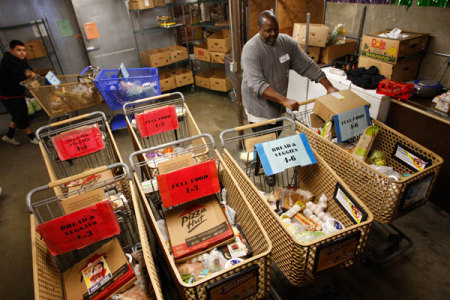Gov't Report: Taxes Will Go Up, Especially for the Poor

Americans at all income levels will be paying more in taxes under current policies, according to this month's long-term budget outlook report by the Congressional Budget Office, with the working poor seeing a greater increase in income taxes.
Even if tax rates are unchanged, Americans will be paying more in taxes due, in part, to how tax policies are structured in relation to inflation and wage growth, according to the report, and these higher payments will be a disincentive to work and save.
"Thus, in the long run, people throughout the income distribution would pay a larger share of their income in taxes than people at the same points in the distribution pay today, and many taxpayers would face diminished incentives to work and save," the report states.
Rather than a sudden, noticeable jolt, the increases will come incrementally in ways that are largely unseen.
Americans, for instance, will be paying a higher proportion of their income in taxes (assuming no changes in policy) through what is called "bracket creep." Since the income tax brackets are indexed to inflation, and, historically, wages rise faster than inflation, Americans will be pushed into higher tax brackets.
Other parts of the tax code or federal law are not even indexed to inflation, which will cause Americans to pay more in taxes as wages and prices rise.
Rising health care costs are yet another cause, according to the report, of higher taxes. The Affordable Care Act's excise tax on high premium, or so-called "Cadillac" health plans, will affect an increasing share of employee compensation.
The way the ACA's health insurance subsidies are structured will also cause some Americans to pay more in taxes, because the income ranges at which those subsidies are phased out remain the same as wages and prices increase.
While the higher tax payments create both incentives and disincentives to work and save more, evidence suggests that the disincentives tend to override the incentives, the CBO said.
The working poor would see a greater percentage point increase in income tax payments than other income groups, the report found.
A married couple with two children making half the median income in 2014 would get a refundable tax credit equal to about 10 percent of their income. By 2039, that will increase to a net tax payment of less than one percent of their income, an increase of almost 11 percentage points. For a family of four making four times the median income, on the other hand, income tax payments will rise only four percentage points, from 18 to 22 percent of income.
Among the reports other findings:
- The federal debt is 74 percent of GDP (the economy's annual output) which is the highest it has ever been, except for a brief period during World War II.
- Under current policy, the federal debt relative to GDP will decline slightly for the next few years before climbing again until it surpasses 100 percent of GDP in 25 years.
- The main drivers of the debt are Social Security and government health care programs, which will increase from an average of 7 percent of GDP over the past 40 years to 14 percent of GDP in 25 years.
- It is "impossible to predict" how long the government can sustain such high levels of debt. "At some point," interest rates would rise, which "would probably have a substantial negative impact on the country."





















